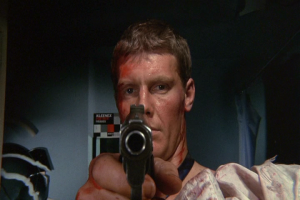In Paris, the former members of Dada mainly gravitated to the Surrealist movement under the leadership of Andre Breton, including the German artist Max Ernst who had been active in Cologne Dada. For the Dadaists in Germany, however, the reality on the ground was much starker. Faced with the political and economic chaos of the Weimar Republic, notably the hyper-inflation that had resulted in the erosion of the middle class; rapid and unprecedented social changes and the unbridled excess and decadence of the cities, as well as a purely artistic reaction against the prevailing style of Expressionism in German art circles led to the Neue Sachlichkeit (New Objectivity). Different interpretations of the New Objectivity can be found in the various regions of Germany, however it was the verists tendency predominant in Berlin who have shaped the popular conception of the Weimar Republic, notably Rudolf Schlichter, Christian Schad, Otto Dix and especially George Grosz (see also Eclipse of the Sun), all of whom were involved in the highly politicised Berlin Dada (see “Everyman His Own Football”).
Grosz’s early paintings, although painted in the manner of German Expressionism, possess a ferocity that is all together new, notably in 1916’s fevered and over-saturated Suicide and the hellish city-scape of The Funeral (Dedicated to Oscar Panizza) from 1917. After the war Grosz was one of the leading figures of Berlin Dada which was by far the angriest of all the various Dadas. A photograph from 1918 shows Grosz as Dada Death and with his friend John Heartfield he invented the technique of photo-montage. His engagement with Dada lent a sharpened satiric edge in his work of this period, including Panorama (Down with Liebknecht) from 1918 and the collage influenced Daum marries her pedantic automaton George in May 1920, John Heartfield is very glad of it and Republican Automatons both from 1920.
The Verists emphasis on a new kind of clinical, detached portraiture suited Grosz’s style of savage caricature and enabled him to memorably lay bare the ugly and sordid metropolis of prostitutes, politicians and profiteers. Along with Eclipse of the Sun the 1926 painting Pillars of Society is one of Grosz’s most stinging critiques of the corruption inherent in the upper, ruling strata of society.
Grosz was also a brilliant draughtsman and his street scene drawings retain a compelling immediacy. His erotic work ranks amongst the finest of the century (I will post separately on this topic).
Grosz, a vehement critic of Hitler emigrated to America in 1933 when the National Socialists came to power. The New Objectivity was unsurprisingly declared ‘degenerate art’ by the Nazi regime. Grosz abandoned his previous subject matter after his move to America and his style softened considerably (with a few occasional exceptions) and in the process lost most of its brutal energy. He returned to Berlin in 1954 where he died in 1959.




Most interesting, I am fascinated by this avant-garde form of art.
LikeLiked by 1 person
Thank you. The New Objectivity is a difficult term because as well as the left wing Berlin tendency you had a conservative tendency in other cities that saw it as a return to classicism and a rejection of all the various modernisms. A purely German phenomenon as well (or far as I know). I concentrated on the Berlin group because they are the best really.
LikeLiked by 1 person
I have been following two blogs for many years that are somewhat into Dada, Neues Vom Hutschi and Dithyrambs and Ditties.
LikeLiked by 1 person
Thank you I will check them out…love that name Dithyrambs and Ditties
LikeLiked by 1 person
An electic composition of a mad man.
LikeLiked by 1 person
You are a true poet Heart
LikeLiked by 1 person
Thank you, that’s truly encouraging. 🙂
LikeLiked by 1 person
My pleasure Heart… I enjoy your comments
LikeLiked by 1 person
Wow, those are amazing
LikeLiked by 1 person
Thank you glad you enjoyed. Grosz is superb.
LikeLiked by 1 person
A dark world.
LikeLiked by 1 person
Indeed and a doomed world.
LikeLiked by 1 person